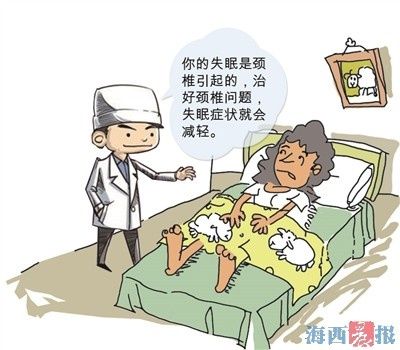
Xiamen Net News (Haixi Morning News reporter Ma Li correspondent Peng Qinping) When it comes to insomnia, many people think of neurasthenia, psychological pressure and other issues, but this insomniac The crux of female white-collar workers in the past year is the cervical spine. Fortunately, after symptomatic treatment, recently, the sleep problem that has troubled her for a long time has been better resolved.
About a year ago, Ms. Yang, in her early 30s, began to suffer from frequent insomnia. Due to the long-term sleeplessness, not only her mental state was not good, but she also gradually lost weight, which seriously affected her work and life. She had also been treated for a while, but with little success.
More than a month ago, Ms. Yang came to Xiamen Qianpu Hospital for surgery. After detailed inquiries, the doctor learned that she often worked at a desk, and she liked to brush her phone with her head down. In addition to insomnia, she was often accompanied by neck pain. Shoulder pain. After conducting a targeted examination based on this, the doctor judged that her insomnia was caused by the cervical spine and was “cervicogenic insomnia” caused by neck-shoulder syndrome.
After identifying the cause, Ms. Yang received a period of acupuncture and moxibustion in the Rehabilitation Medicine Department according to the doctor’s recommendation. With the correction of cervical dislocation and the relief of neck and shoulder pain, her sleep state gradually recovered. normal.
Wang Long, the chief surgeon of Xiamen Qianpu Hospital, introduced that the so-called cervicogenic insomnia is the compression or stimulation of the sympathetic nerves caused by neck diseases, which increases the excitement of the brain and leads to insufficient sleep time or deep sleep. . Patients with cervicogenic insomnia generally have limited neck activities, pain and numbness in the head, neck, shoulders, back and limbs, and some patients also experience limb weakness, convulsions, deafness, tinnitus, and dreaminess.
The doctor said that for patients with mild disease, maintaining a correct sleeping position, choosing appropriate pillows, less “head bowing”, and more outdoor activities can alleviate the disease; Patients with severe disease and a long course of disease should be examined and treated for the cervical spine as soon as possible.